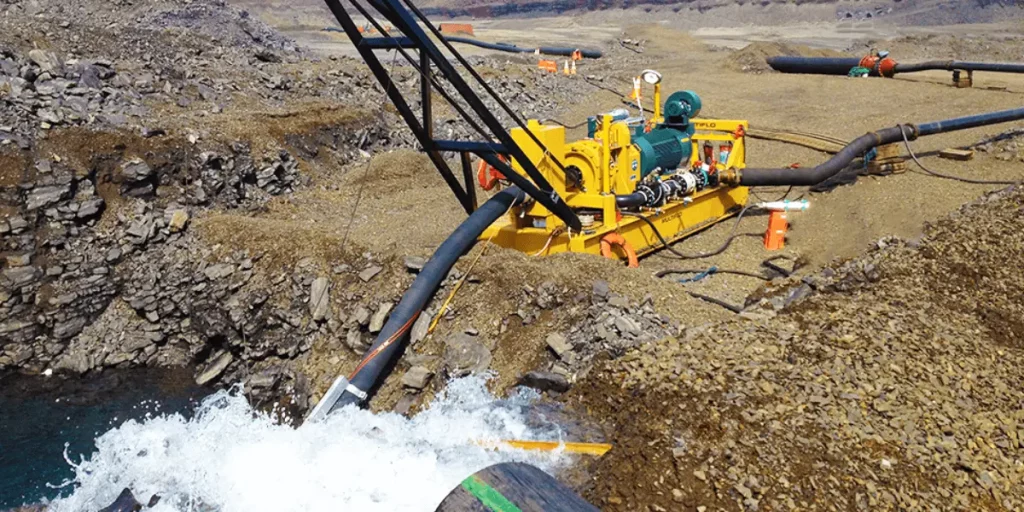Dewatering pumps are essential in various industries to remove unwanted water from construction sites, mines, and other locations. Proper maintenance and troubleshooting are crucial to ensure these pumps’ longevity and efficient performance. This guide provides expert tips for maintaining and troubleshooting dewatering pumps to keep them running smoothly and minimize downtime.
Routine Maintenance Tips
- Regular Inspection
- Visual Checks: Regularly inspect the pump for any signs of wear, damage, or leaks. Look for cracks, rust, or other indications of deterioration.
- Connections and Fittings: Ensure all connections and fittings are secure and leak-free. Tighten any loose bolts or screws.
- Hoses and Cables: Check hoses and cables for signs of wear or damage. Replace any that are frayed or cracked.
- Lubrication
- Bearings and Moving Parts: Regularly lubricate bearings and other moving parts according to the manufacturer’s guidelines. Use the recommended type and amount of lubricant to avoid over or under-lubrication.
- Grease Points: Ensure all grease points are adequately greased to reduce friction and wear.
- Cleaning
- Pump Housing and Components: Clean the pump housing and components to remove dirt, debris, and buildup that can cause clogs or reduce efficiency.
- Filters and Strainers: Clean or replace filters and strainers regularly to ensure they are not clogged, which can reduce pump performance.
- Checking Fluid Levels
- Oil Levels: Regularly check the oil levels in the pump and replace or top up as necessary. Use the recommended oil type.
- Coolant Levels: Ensure the coolant levels are adequate and top up if needed. Check for any leaks in the cooling system.
- Monitoring Performance
- Flow Rate and Pressure: Regularly monitor the flow rate and pressure to ensure the pump operates within the specified parameters. Significant changes can indicate potential issues.
- Noise and Vibrations: Listen for unusual noises or excessive vibrations, which can indicate mechanical problems.
Troubleshooting Common Issues
- Pump Not Starting
- Power Supply: Check the power supply and ensure the pump is connected correctly. Verify that the power switch is on and that the circuit breakers are not tripped.
- Control Panel: Inspect the control panel for error codes or warning lights. Follow the manufacturer’s troubleshooting guide for specific issues.
- Motor Issues: Check the motor for any signs of damage or overheating. Ensure the motor is properly lubricated and free from obstructions.
- Low Flow Rate or Pressure
- Clogged Filters/Strainers: Clean or replace clogged filters and strainers. Ensure the intake is not blocked by debris.
- Air Leaks: Check for air leaks in the suction line, which can cause a loss of prime and reduced performance. Tighten any loose connections.
- Worn Impeller: Inspect the impeller for signs of wear or damage. Replace if necessary.
- Pump Overheating
- Cooling System: Ensure the cooling system functions correctly and the coolant levels are adequate. Check for any leaks or blockages in the cooling system.
- Ventilation: Ensure the pump is adequately ventilated and not operating in a scorching environment.
- Overloading: Avoid overloading the pump by operating it within the recommended parameters. Overloading can cause overheating and damage.
- Excessive Noise or Vibrations
- Loose Components: Check for any loose components and tighten them as necessary.
- Imbalance: Ensure the impeller and other rotating parts are balanced. An imbalance can cause excessive vibrations.
- Worn Bearings: Inspect the bearings for wear and replace them if necessary. Proper lubrication can also reduce noise and vibrations.
- Pump Losing Prime
- Air Leaks: Check for air leaks in the suction line and tighten any loose connections.
- Suction Lift: Ensure the suction lift is within the pump’s capabilities. Excessive suction lift can cause loss of prime.
- Foot Valve: Inspect the foot valve for any signs of damage or clogging. Replace or clean if necessary.
Conclusion
Maintaining and troubleshooting dewatering pumps requires regular inspection, cleaning, and monitoring to ensure they operate efficiently and effectively. By following these expert tips, you can minimize downtime, extend the life of your pump, and ensure successful dewatering operations. Regular maintenance and prompt troubleshooting of issues will keep your dewatering pump in optimal condition and ready to handle the demands of any project.

